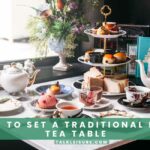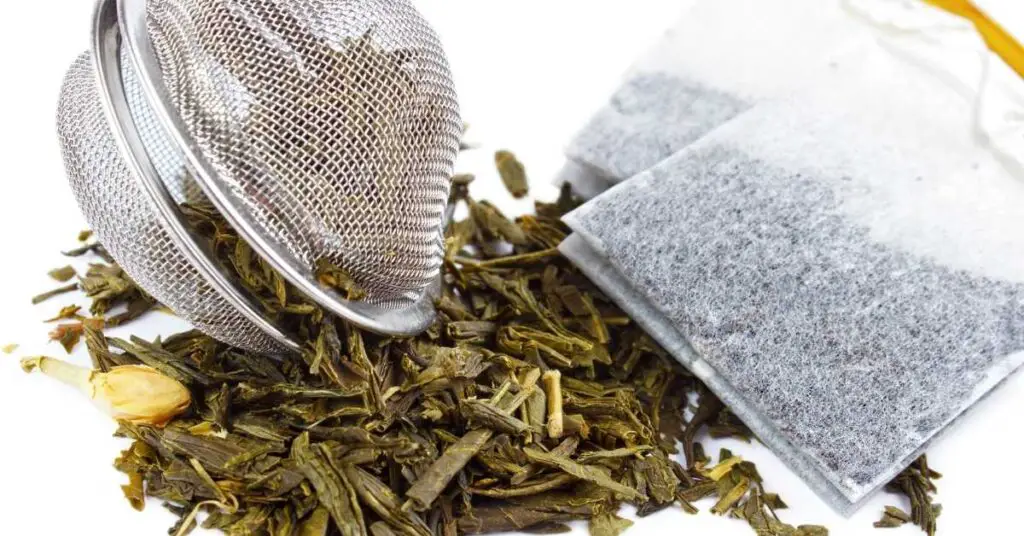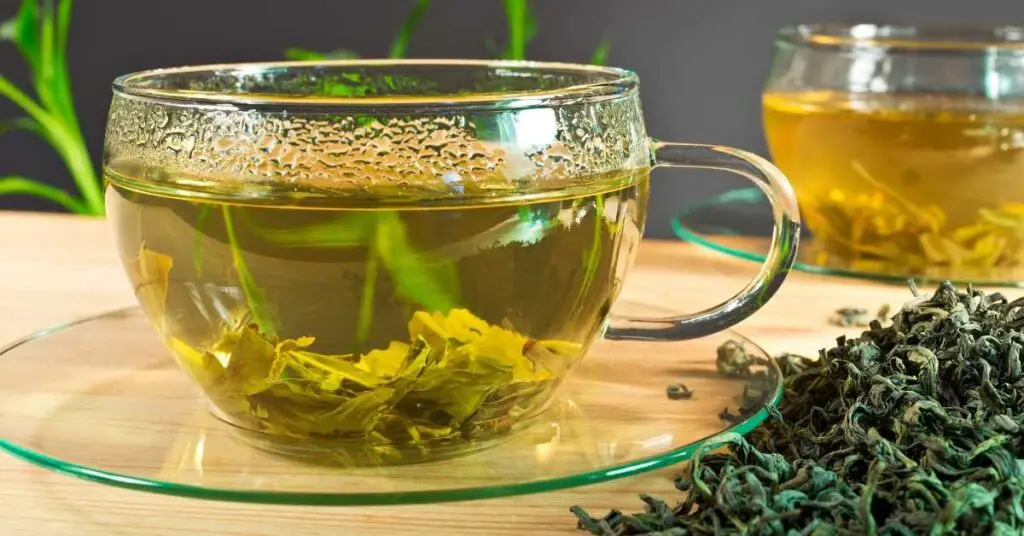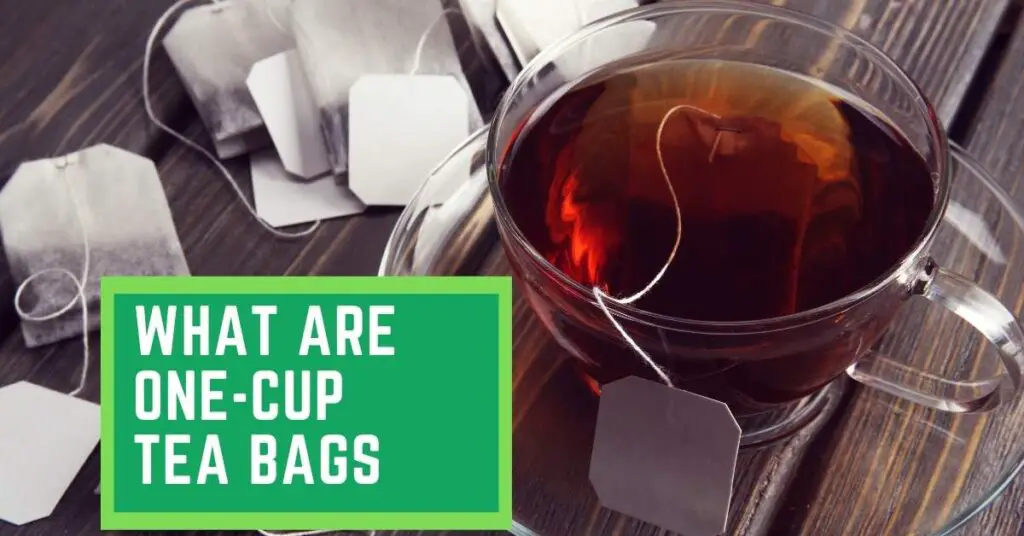Welcome, tea enthusiasts and curious minds alike, to a journey that’s about to spill the tea—literally and metaphorically.
Grab your favorite mug, settle into that cozy spot on your couch, and let’s dive into the heartwarming tales of family tea traditions from around the globe. Because, let’s face it, life is too short for bad tea and boring stories!
Also read: How to set a traditional high tea table: A step-by-step guide.

Setting the Stage for Tea Traditions
But first, tea…
Before we embark on this tea-riffic adventure, let’s pause for a moment and appreciate the sheer versatility of tea. It’s the beverage that says, “Hey, I can be comforting or energizing, and I’ll still have your back.” If you’re the type who thinks a day without tea is like a day without sunshine, you’re in good company.
We’re about to traverse continents, sip by sip, uncovering the magic that happens when families gather around the teapot.
Cue the Cultural Symphony of Tea
Tea is not just a drink; it’s a cultural symphony, and each tradition is like a unique note in a melody. Picture this: in China, tea isn’t just a beverage; it’s a ceremony. Meanwhile, across the globe, in England, it’s an excuse for a fancy afternoon party. And in Morocco, it’s a gesture of hospitality that puts the “welcome” in mint tea.
We’re about to explore how these traditions have become the heartbeat of families, connecting generations through the simple act of steeping leaves.
Passing Down the Tea Torch
Now, let’s talk legacy. No, not the kind you see on the Antiques Roadshow, but the kind that involves passing down the sacred knowledge of steeping the perfect cuppa. Grandma’s tea-making skills? They’re practically legendary.
Aunt Susan’s secret blend that she only reveals during family reunions It’s the stuff of whispered family lore. We’ll uncover how families preserve these time-honored rituals, creating a legacy as rich as the strongest black tea.
Tea Tales and Anecdotes
But hold on, it’s not all serious business. We’re spicing things up with a sprinkle of humor, a dash of wit, and maybe a pinch of sarcasm. Because, let’s be real, tea is fantastic, but a tea story with a side of laughter? Now, that’s brew-tea-ful.
So, buckle up, tea aficionados! We’re about to embark on a tea-infused journey that will warm your heart, tickle your taste buds, and maybe make you appreciate your tea kettle a little bit more. Stay steeped, my friends!
Also read: The incredible craftsmanship behind handmade tea sets.
The Art of Tea: A Global Perspective
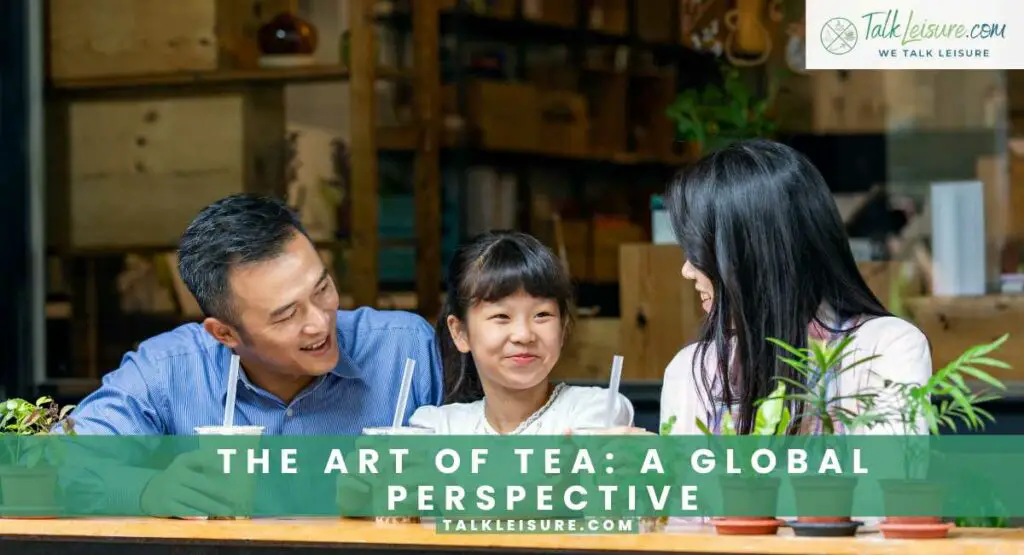
Welcome back, fellow tea enthusiasts, as we continue our expedition into the enchanting world of tea. In this leg of our journey, we’re donning our metaphorical explorer hats and delving into the cultural rabbit hole of tea. Spoiler alert: it’s not just leaves in hot water; it’s a passport to traditions, rituals, and stories that have been steeped through centuries.
Exploring the Cultural Significance of Tea
Tea: More Than Just a Beverage
Let’s start by dispelling the notion that tea is just a liquid in a cup. Oh no, my friends, it’s an aromatic, soul-soothing journey through history and culture. Picture this: In China, the birthplace of tea as we know it, the mere act of pouring tea is an art form. It’s a dance of fragrant leaves and hot water, a cultural ballet that has been perfected over generations.
Tea as a Cultural Tapestry
Imagine weaving a tapestry where every thread represents a unique culture and each knot is a different way to enjoy tea. That, dear readers, is the cultural significance of tea. Whether it’s the Zen-like precision of a Japanese tea ceremony or the lively chatter of a British afternoon tea, tea is more than a drink; it’s a cultural connector.
Tea as a Ritual
In many cultures, tea is not just a casual affair; it’s a ritual, a ceremony that demands attention and respect. In Morocco, the pouring of mint tea isn’t just a way to quench thirst; it’s a gesture of hospitality, a symbol of welcome that transcends language.
The careful preparation of chai in India isn’t just a routine; it’s a daily communion that brings families together.
Tea and Traditions Across Continents
As we hop from continent to continent on our tea-fueled adventure, we’ll witness how tea adapts to its surroundings like a cultural chameleon. From the robust flavors of Yerba Mate in South America to the delicate intricacies of Chinese oolong, each sip tells a story of geography, climate, and tradition.
The Unspoken Language of Tea
In this exploration, we’ll unravel the unspoken language of tea—how a cup can convey warmth, friendship, or even a moment of solitude. It’s the reason why, in Iran, a cup of chai is synonymous with an invitation to sit, chat, and share stories. Tea, in its various forms, speaks volumes without saying a word.
So, grab your passports, fellow travelers, as we embark on this cultural odyssey through the lens of tea. Get ready to sip, savor, and soak in the diverse traditions that make tea not just a beverage but a cultural masterpiece. Onward we go, steeped in curiosity and teacups at the ready!
Also read: A guide to starting your own tea garden at home.
Tea Through Generations: Passing Down the Rituals

Welcome back to our tea-infused expedition, where the journey through generations begins. In this leg of our adventure, we’re delving into the heart of family traditions, where the art of tea isn’t just a personal preference; it’s a legacy waiting to be passed down. Grab your favorite family heirloom teapot, and let’s explore how families around the world keep the flame of tea rituals alive.
A Legacy of Tea: How Families Preserve Tradition
Tea: A Family Affair
Picture this: a cozy kitchen, the gentle clinking of teacups, and the wisdom of generations passed down over a pot of Earl Grey. In the world of tea, it’s not just about personal preferences; it’s a family affair. The legacy of tea is often intertwined with memories of shared moments, laughter, and the comforting aroma of brewing leaves.
Grandma’s Brew: A Time-Honored Tradition
Every family has a tea matriarch or patriarch, a guardian of the sacred tea rituals. Whether it’s Grandma’s secret blend that seems to cure all ailments or Grandpa’s precise timing for the perfect steep, these traditions become the threads that weave the family tapestry. It’s more than just a cup of tea; it’s a sip of history.
Passing Down the Teapot: An Intergenerational Handoff
Tea traditions are like a relay race where the baton is a cherished teapot. The passing down of a teapot from one generation to the next is a ceremony in itself, a symbolic gesture that says, “Here, carry on the legacy.” These teapots become vessels of family stories, etched with the stains of countless brews and the laughter that echoed around them.
Teaching the Art of Tea: From Child to Grandchild
Tea ceremonies aren’t exclusive to certain cultures; they’re universal, transcending borders and backgrounds. In Japan, children learn the meticulous art of the tea ceremony as a rite of passage. In India, a mother shows her daughter the alchemy of spices in a masala chai.
The passing down of tea knowledge isn’t just about brewing; it’s about imparting values, connecting generations in a shared love for the leaf.
Tea-Time Tales: Stories That Steep Through Time
Around the family tea table, stories bloom like tea leaves in hot water. Tales of triumphs, failures, and the mundane yet magical moments of life are exchanged over cups of steaming goodness. These stories become as much a part of the family legacy as the tea itself, creating a narrative that stretches across time.
So, dear readers, as we sip from the cup of familial wisdom, let’s appreciate not just the flavors but the stories that infuse our tea. Whether it’s a whispered secret ingredient or a recipe passed down like an heirloom, the legacy of tea is a gift that keeps on brewing. Join us as we raise our cups to family traditions—may they steep through generations to come!
Asian Elegance: Tea Traditions in the East
Welcome, tea aficionados, to the captivating realm of Asian tea traditions. In this segment of our journey, we’re embarking on a quest through the lands where tea isn’t just a drink; it’s a cultural masterpiece. From the ancestral customs of China to the serene elegance of Japanese tea ceremonies, get ready to be immersed in the art, history, and flavors that define tea in the East.
China: Ancestral Tea Customs
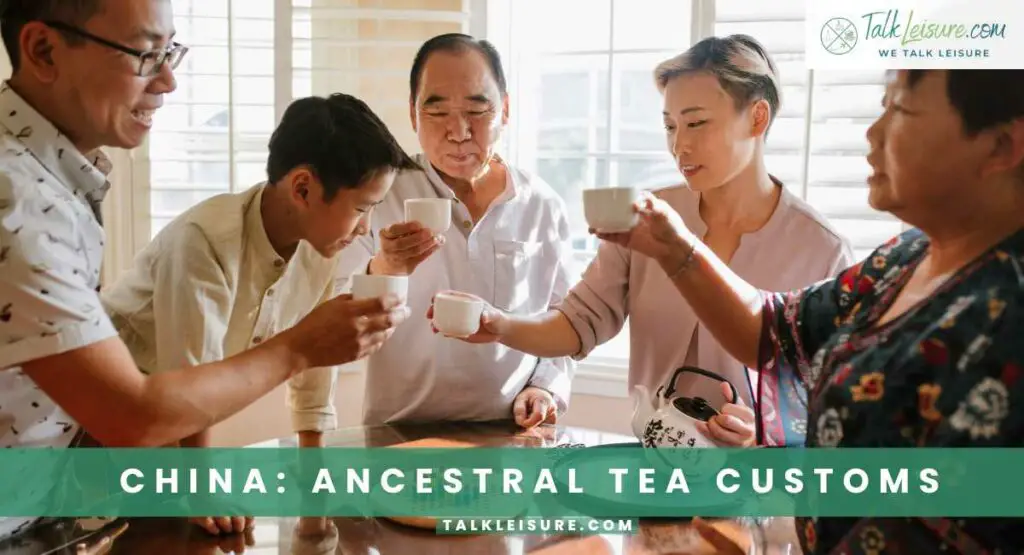
Tea as Time Travel: Unveiling Ancient Rituals
China, the birthplace of tea, is a treasure trove of ancestral customs that have withstood the test of time. Imagine stepping into a world where every pour, every sip, is a dance with history. In Chinese tea culture, it’s not just about the taste; it’s about the journey through centuries. From the precise choreography of a Gongfu tea ceremony to the contemplative simplicity of a traditional tea tasting, China’s tea customs are a living testament to the art of slow living.
The Art of Gongfu: Pour, Infuse, Sip
Enter the realm of Gongfu tea, where every movement is a choreographed performance. Gongfu, translating to “skill achieved through hard work,” is not just a brewing method; it’s a philosophy.
The delicate pouring, the multiple infusions, the focus on the aroma—each element tells a story.
It’s a conversation with the leaves, a dialogue that spans generations and bridges the gap between the old and the new.
Tea Mountains and Oolong Dreams
China’s diverse landscapes give birth to an array of teas, each with its own personality. From the misty peaks of Wuyi Mountain, the birthplace of oolong tea, to the rolling hills of Yunnan, home to the famed Pu-erh, every sip is a journey through terroir. These teas are not just beverages; they’re expressions of the land, a sipable poetry that captures the essence of the Chinese countryside.
Japan: The Serenity of Japanese Tea Ceremonies
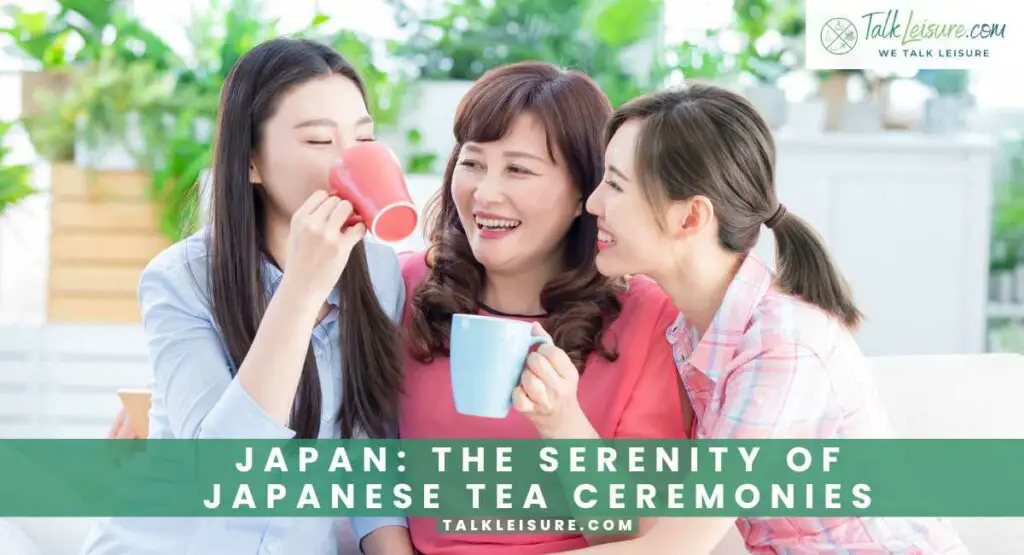
Harmony, Respect, Purity, Tranquility: The Essence of Chanoyu
Crossing the seas to Japan, we enter the serene world of Japanese tea ceremonies. Here, tea isn’t just about the beverage; it’s a philosophy encapsulated in Chanoyu, the Way of Tea. The four principles of Harmony, Respect, Purity, and Tranquility guide every movement in this ancient ritual, turning a simple act into a spiritual experience.
Sip Slow, Live Slow: The Way of Matcha
Enter the realm of matcha, the powdered green tea that has become synonymous with Japanese tea culture.
The preparation of matcha is a ritual in itself, a dance between the bamboo whisk and the vibrant green powder.
In every sip of frothy matcha, there’s a taste of mindfulness, a moment of tranquility that transcends the hurried pace of the outside world.
Tea Gardens and Zen Aesthetics
Japanese tea culture extends beyond the teapot; it’s a celebration of nature and aesthetics. The meticulously manicured tea gardens, the minimalist beauty of tea bowls, and the seasonal motifs that adorn the tea room—all reflect the influence of Zen Buddhism.
In the world of Japanese tea, every element is intentional, creating an atmosphere that invites contemplation and connection.
As we immerse ourselves in the elegance of Asian tea traditions, from the ancient customs of China to the Zen-inspired ceremonies of Japan, we invite you to sip along and savor the richness of culture in every brew. Join us as we raise our cups to the East, where tea is not just a drink but a timeless expression of art and tradition.
Chai Time: Heartwarming Stories from India
Namaste, tea enthusiasts! Prepare to be transported to the vibrant streets and cozy kitchens of India, where tea isn’t just a beverage; it’s a cultural phenomenon. In this segment of our global tea journey, we’re diving into the heartwarming stories of chai time, where the aroma of spices mingles with the laughter of families. Get ready for a sensory journey through India’s tea traditions.
Family Bonds over Masala Chai
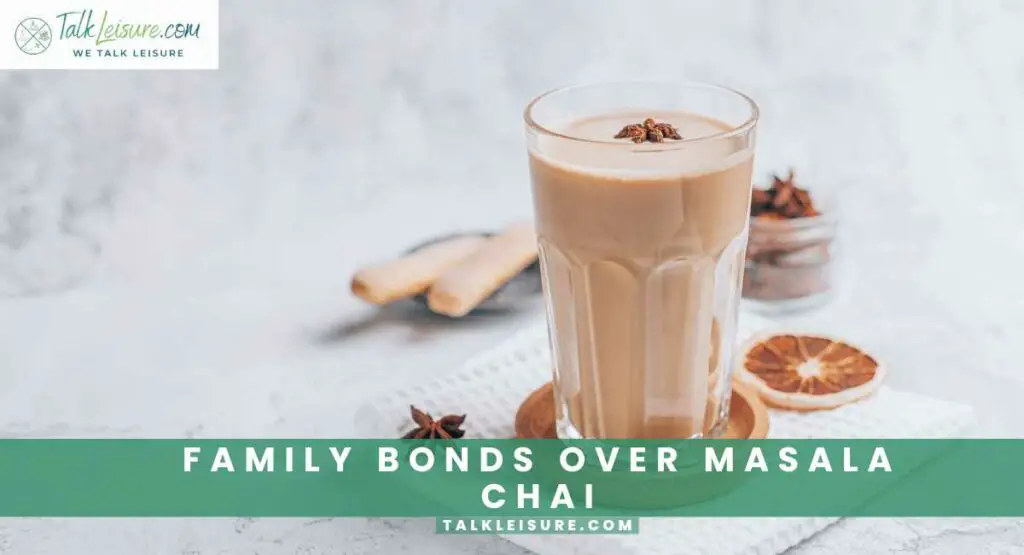
Masala Chai: More Than Just Spiced Tea
In the land of colors and contrasts, tea isn’t just a drink; it’s an emotion. And at the center of this emotional storm is masala chai. Picture this: the heady scent of cardamom, cloves, and ginger wafting through the air as a pot of tea bubbles away. Masala chai is more than a beverage; it’s a symphony of spices that creates a harmony of flavors and family bonds.
The Chai Wallah’s Song: Street-side Stories
Step onto the bustling streets of India, and you’ll encounter the chai wallah, the unsung hero of every neighborhood. Their small, steaming stalls are not just tea vendors; they are storytellers.
Each cup they brew tells a tale—of early morning conversations, office breaks, and the rhythm of daily life. It’s a communal experience, a ritual that binds communities together over shared cups of warmth.
Chai and Conversations: The Social Glue
In Indian homes, chai time is sacred. It’s the pause button in the hectic melody of life, a time to gather and share. Families unite over steaming cups, swapping stories, dreams, and maybe a few neighborhood rumors. The clinking of cups becomes percussion in the soundtrack of togetherness, and each sip is a note in the melody of family bonds.
Rituals and Rhythms: Tea in Indian Homes
The Morning Chai Symphony: Wake-Up Call with a Kick
In India, the day doesn’t truly begin until the first sip of morning chai dances on the taste buds. It’s a wake-up call infused with spices—a ritual that kick-starts the day with a burst of flavor and energy. The morning chai is more than a routine; it’s a crescendo that sets the rhythm for the day ahead.
High Tea and Evening Serenity: The 4 O’Clock Tradition
Come afternoon, and it’s time for another chai interlude. Known as “chai pe charcha” (tea and talk), this afternoon tea is a moment to recharge, gossip a bit, and enjoy the soothing notes of a well-brewed cup. It’s a chance to pause, reflect, and connect before the day’s final act.
Chai’s Sweet Finale: Evening Bliss
As the sun dips below the horizon, Indian homes come alive with the sound of whistling kettles and the clinking of cups. The evening chai is a sweet farewell to the day, a moment of reflection accompanied by a plate of biscuits or the tempting aroma of pakoras. It’s the final note in the day’s tea symphony, a soothing conclusion to the rhythm of life.
So, dear readers, join us as we savor the heartwarming stories of chai time in India—where tea isn’t just a beverage; it’s a melody that weaves through the tapestry of family, community, and tradition. Get ready to embrace the warmth and spices as we take a flavorful plunge into the chai culture of India!
British Teatime Tales: Scones and Family Gatherings
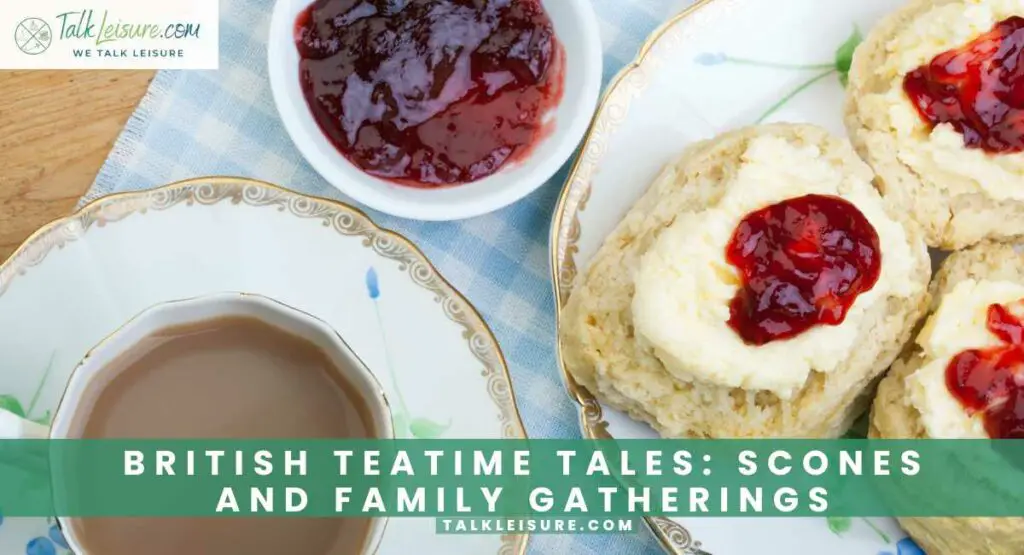
Welcome, tea enthusiasts, to the charming world of British teatime, where the clink of teacups and the crumbly goodness of scones define an age-old tradition. In this segment of our global tea journey, we’re crossing the English Channel to explore the elegance and warmth that is quintessentially British teatime.
So, put the kettle on, dust off your finest china, and let’s indulge in the tales of afternoon tea, where scones and family gatherings take center stage.
Afternoon Tea: A Family Affair
Tea in the Afternoon: A Graceful Pause
In the United Kingdom, the afternoon tea ritual is not just a break in the day; it’s a genteel pause, a moment to step out of the hustle and bustle and into a world of refined indulgence. Imagine delicate sandwiches, freshly baked scones, and a selection of teas served on a tiered stand. Afternoon tea is not merely a meal; it’s a family affair, a celebration of togetherness that transcends generations.
Scones: The Crown Jewel of Teatime
Ah, the scone—the unsung hero of British teatime. These little rounds of baked perfection, topped with clotted cream and strawberry jam, are the crown jewels of the tea table.
The act of splitting a warm scone, spreading it with cream and jam, and savoring the first bite is a ritual in itself.
It’s a moment to appreciate the simple joys of life and, of course, the art of perfectly baked pastries.
Tea Etiquette and Politeness Over Potions
Teatime in Britain comes with its own set of unwritten rules. Pinkies down, elbows off the table—there’s a certain politeness that accompanies the pouring of tea. The clinking of teaspoons and the soft hum of conversation create an atmosphere of refined elegance. Afternoon tea is not just about the food; it’s about the grace and etiquette that accompany each sip.
The Role of Tea in British Culture
Tea: More Than a Beverage, a Cultural Anchor
In the United Kingdom, tea is not just a drink; it’s a cultural anchor that has weathered storms and celebrated victories. It’s the elixir that has fueled late-night conversations, warmed chilly evenings, and provided solace in times of need. The role of tea in British culture extends beyond the teacup; it’s a symbol of resilience, comfort, and tradition.
Tea and Tales: Storytelling Over Teatime
Teatime is also a time for storytelling. Whether it’s the recounting of family anecdotes or the sharing of news from the day, tea becomes the backdrop for the narratives that shape family histories. The steam rising from the teapot seems to carry with it the essence of stories, making every cup a chapter in the ongoing saga of family life.
So, dear readers, as we traverse the charming landscape of British teatime, let’s raise our teacups to the elegance of afternoon tea and the heartwarming moments it fosters.
From scones to stories, let’s savor the tradition and timeless grace that tea brings to family gatherings in the United Kingdom. Cheers to teatime tales and the enduring magic of a well-brewed cup!
African Infusions: Tea in Diverse Cultures
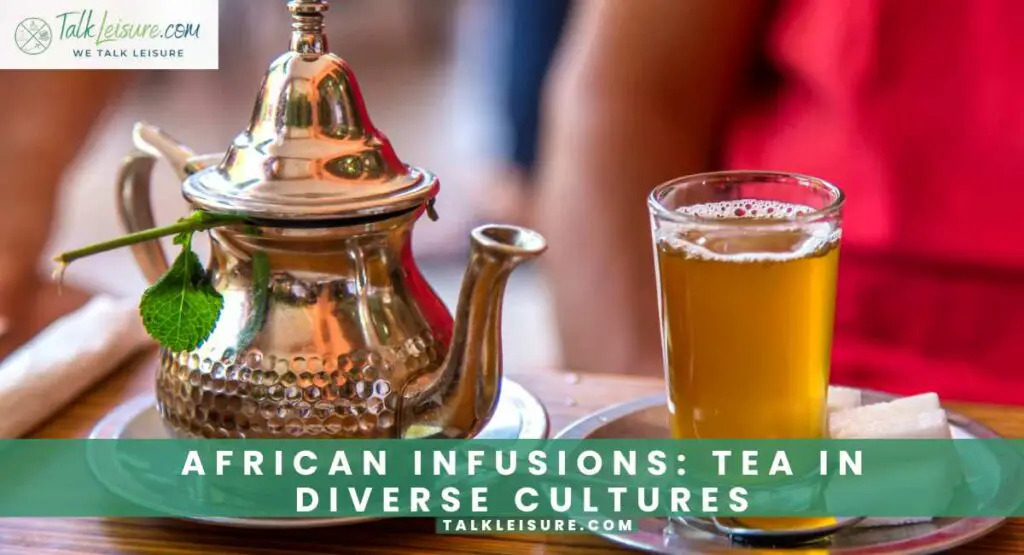
Karibu, tea enthusiasts! Join us as we embark on a journey to the vast and diverse continent of Africa, where tea traditions are as rich and varied as the landscapes that stretch from the Sahara to the Cape.
In this leg of our global tea exploration, we’ll uncover the unique infusions that define the tea culture in Africa, with a special focus on Moroccan Mint Tea and South African Rooibos. Get ready for a flavorful adventure that spans deserts, mountains, and the warm embrace of African hospitality.
Moroccan Mint Tea: A Symbol of Hospitality
Morocco: Where Tea is a Ritual, Not Just a Drink
In the heart of North Africa, Morocco beckons with the tantalizing aroma of mint-infused tea. Moroccan Mint Tea is not just a beverage; it’s a ritual, a symbol of hospitality, and a gesture of warmth. Picture this: a bustling market, the sound of vendors calling, and the inviting scent of fresh mint mingling with green tea.
In Moroccan homes, the preparation and serving of tea are intricate ceremonies, where every step is a dance of tradition and a welcoming embrace to guests.
The Art of Pouring: A Ballet of Tea and Tradition
Moroccan Mint Tea is a dance, a ballet of pouring that goes beyond the mere act of serving. The tea is poured from a height, creating a frothy crown and allowing the flavors to mingle in a delicate harmony. It’s not just about quenching thirst; it’s about creating a moment of connection, a shared experience that binds people together over the communal enjoyment of tea.
Symbolism in Every Sip: Tradition in a Teacup
Beyond the taste, Moroccan Mint Tea is steeped in symbolism. The pouring of tea is a sign of respect, and the number of times the tea is poured carries significance—each round signifies a different aspect of life. It’s a language in a teacup, a cultural tradition that speaks volumes without words. So, let’s savor the minty freshness and dive into the tradition that turns tea into a symbol of Moroccan hospitality.
South African Rooibos: Family Favorites
Rooibos: The Red Gold of South Africa
Venture south to the Rainbow Nation, and you’ll discover Rooibos, the red gold of South Africa. This caffeine-free herbal tea, harvested from the indigenous rooibos plant, has become a staple in South African households. Its earthy, slightly sweet flavor makes it a family favorite, a go-to beverage for moments of relaxation and connection.
Family Bonding Over Rooibos: A South African Tradition
In South African homes, Rooibos is more than just a beverage; it’s a tradition woven into the fabric of family life. Imagine sitting on the porch, the warm African sun casting a golden glow, as generations come together over cups of Rooibos. It’s a time to share stories, discuss the day’s events, and create bonds that stand the test of time.
Rooibos as a Culinary Companion: Beyond the Teacup
Rooibos isn’t confined to the teacup; it’s a versatile ingredient that finds its way into South African cuisine. From Rooibos-infused desserts to savory dishes with a hint of rooibos, this tea transcends the boundaries of beverage and becomes a culinary companion, adding its unique flavor to a variety of dishes.
So, as we journey through the diverse tea cultures of Africa, let’s raise our teacups to Moroccan Mint Tea’s elegance and South African Rooibos’ warmth.
Here’s to the continent where tea isn’t just a drink; it’s a celebration of tradition, connection, and the vibrant tapestry of African cultures. Cheers to the diverse infusions that make tea a true delight in every corner of this beautiful continent!
Tea in the Americas: Fusion of Traditions
¡Hola, tea enthusiasts! Get ready to journey through the diverse landscapes of the Americas, where tea traditions are as varied as the cultures that span from the Andes to the Appalachians. In this leg of our global tea exploration, we’ll be uncovering the unique fusions that define tea culture in the Americas, with a special focus on Yerba Mate in South America and Southern Sweet Tea.
So, let’s embark on this flavorful odyssey, where tea becomes a bridge between traditions and shared moments.
Yerba Mate in South America: Shared Moments
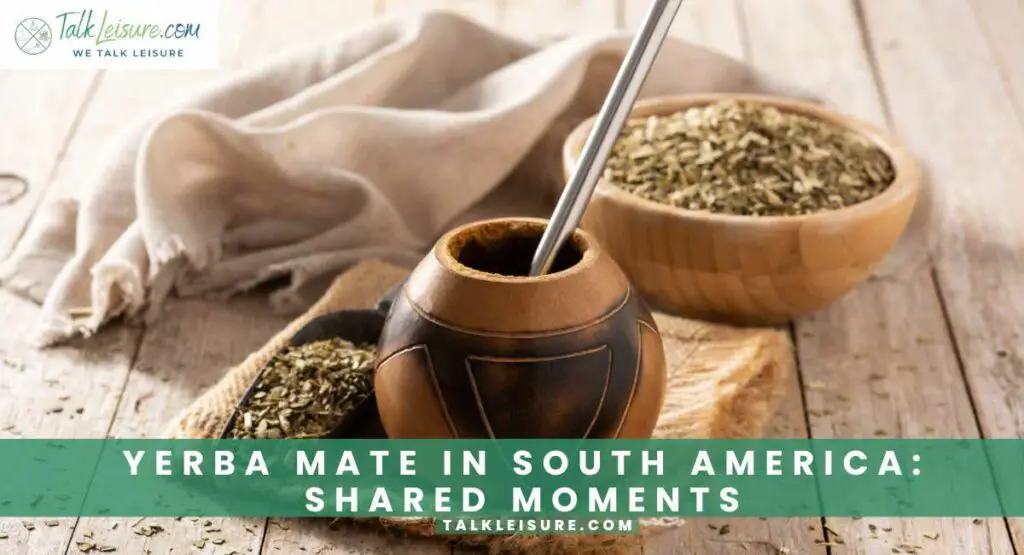
Argentina to Uruguay: The Mate Ritual
In the heart of South America, Yerba Mate is not just a beverage; it’s a way of life, a shared experience that transcends borders and unites communities. Picture this: a circle of friends or family passing around a mate gourd, sipping the herbal infusion through a metal straw called a bombilla. The mate ritual is more than a tea-drinking ceremony; it’s a celebration of togetherness, a moment where time slows down, and connections are strengthened.
The Art of Sharing: Mate as a Social Glue
Yerba Mate isn’t sipped alone; it’s a communal affair. The act of sharing mate is a gesture of friendship and trust. It’s a tradition that turns strangers into friends and friends into family. In South American homes, the sharing of mate is a daily ritual, creating a sense of unity and camaraderie that extends far beyond the simple act of drinking tea.
Energetic Boost and Cultural Symbolism
Beyond the social aspects, Yerba Mate is celebrated for its energizing properties. The infusion, derived from the leaves of the yerba mate plant, contains caffeine and theobromine, providing a natural pick-me-up. But it’s not just about the energy; it’s about the cultural symbolism woven into each sip, connecting individuals to their roots and the rich heritage of South America.
Southern Sweet Tea: A Taste of Home
Welcome to the Southern Hospitality: Sweet Tea Style
As we journey through the United States, we encounter the quintessential beverage of Southern hospitality—Sweet Tea. This iconic drink, with its roots firmly planted in the American South, is a refreshing blend of black tea, sugar, and a splash of nostalgia. The preparation is an art, with the tea brewed strong and then sweetened to perfection.
Front Porch Sippin’: A Ritual of Relaxation
Imagine a lazy afternoon on a porch swing, a gentle breeze carrying the scent of magnolias, and a glass of iced Sweet Tea in hand. It’s a ritual of relaxation, a moment to pause and savor the simple joys of life. Sweet Tea isn’t just a drink; it’s a taste of home, a beverage that embodies the warmth and charm of Southern culture.
The Allure of Sweet Tea: A Culinary Tradition
Sweet Tea isn’t confined to the beverage category; it’s a culinary tradition that finds its way into Southern recipes. From Sweet Tea-brined chicken to Sweet Tea-flavored desserts, this beloved drink becomes an integral part of Southern cuisine, adding its distinctive sweetness to a variety of dishes.
So, dear readers, as we traverse the Americas, from the mate circles of South America to the front porches of the Southern United States, let’s raise our teacups to the fusion of traditions that make tea a delightful bridge between cultures. Here’s to shared moments, cultural exchanges, and the diverse flavors that define tea in the Americas. Cheers!
Tea in Unlikely Places: Unexpected Traditions
Greetings, tea enthusiasts! Brace yourselves for a journey to unexpected corners of the world where tea traditions flourish in ways that might surprise you. In this segment of our global tea expedition, we’ll explore the unique rituals that have taken root in Russia, where tea accompanies the rhythmic clatter of the Trans-Siberian Railway, and in Iran, where chai is not just a drink but a cornerstone of Persian hospitality.
So, fasten your seatbelts, or perhaps secure your samovar, as we delve into these unexpected and delightful tea traditions.
Russia: Tea on the Trans-Siberian Railway
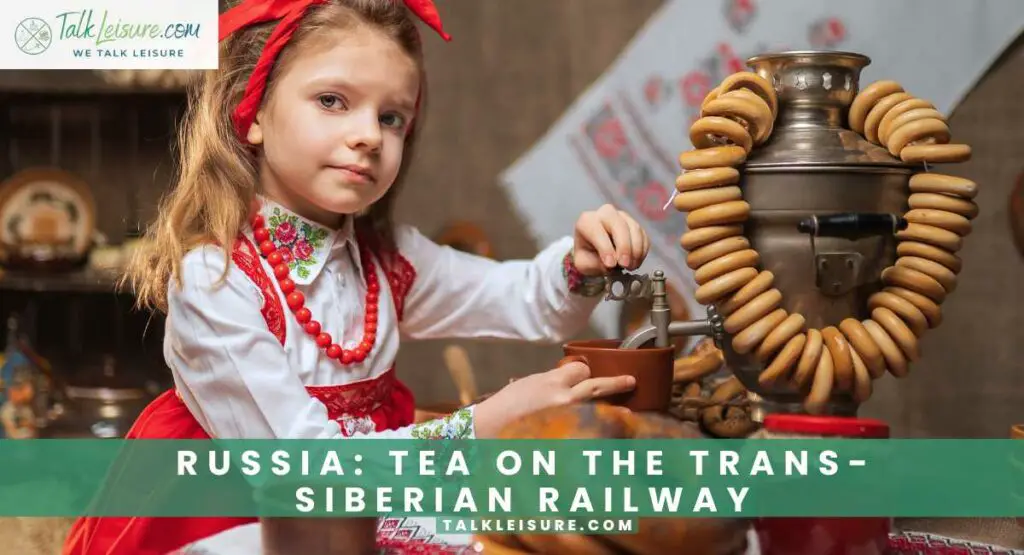
The Tea Train: Brewing on the Move
Picture this: the vast expanse of the Trans-Siberian Railway, the world’s longest train journey, and the comforting aroma of brewing tea filling the air. In Russia, where winters are harsh and journeys are long, tea on the Trans-Siberian Railway is not just a beverage; it’s a travel companion.
The samovar, a traditional Russian tea urn, takes center stage, providing a constant supply of hot water to keep the teacups full.
Tea as a Social Lubricant: Bonding Over a Brew
On the Trans-Siberian Railway, tea becomes a social affair, a way for passengers to connect amidst the rhythmic clatter of the wheels. The samovar’s song, as it heats water and hisses steam, sets the background melody for conversations and shared moments. Strangers become friends over a cup of tea, turning the train journey into a communal experience.
Tea in a Glass: A Russian Tradition
In Russia, tea is often served in glasses, not cups. The tradition of sipping tea from a glass, sometimes held in a metal holder called a podstakannik, is a nod to the country’s rich tea-drinking history. The glass doesn’t just hold the tea; it holds the essence of Russian camaraderie, making the simple act of sipping a cup of tea a cultural experience.
Iran: Chai, a Staple of Persian Hospitality
Chai in Iran: More Than a Beverage
Traveling to the enchanting land of Persia, we discover that chai is not just a drink; it’s a staple of Persian hospitality. In Iran, chai is more than a mere beverage; it’s an essential element of social gatherings, a symbol of warmth, and a gesture of welcome. The preparation and serving of chai in Iranian homes are rituals that go beyond the act of brewing; they represent a tradition passed down through generations.
The Persian Tea Ceremony: Symbolism in Every Sip
The Persian tea ceremony is a choreography of elegance, from the gentle pouring of tea into delicate glasses to the act of serving guests. It’s a ceremony that reflects the art of Persian hospitality, where every gesture carries meaning. The ritual of offering tea is a way of saying, “You are welcome in my home,” and the act of accepting it is a sign of gratitude.
Saffron, Cardamom, and Rosewater: Flavorful Elegance
Iranian chai is a symphony of flavors, often infused with aromatic spices like saffron and cardamom or adorned with a hint of rosewater. The combination creates a beverage that is not just a drink but an experience for the senses. Each sip is a journey through Persian culture, a moment of connection that transcends time and place.
As we wrap up our visit to these unexpected tea havens, from the rhythmic tracks of the Trans-Siberian Railway to the elegant tea ceremonies of Iran, let’s raise our glasses and cups to the unexpected traditions that make tea a delightful surprise in every corner of the world. Here’s to the global tapestry of tea, woven with threads of culture, warmth, and unexpected moments of joy. Cheers!
Conclusion
In the world’s diverse tapestry, tea emerges as the universal language, transcending borders and cultures. From the communal gatherings over Moroccan Mint Tea to the rhythmic clatter of the Trans-Siberian Railway’s samovar, each cup tells a story.
Tea fosters connection—whether shared in Japanese tea ceremonies, sipped during South African family time with Rooibos, or embraced in the warmth of Southern Sweet Tea. It’s a cultural bridge in unexpected places like the Iranian chai ceremony.
In conclusion, the universal language of tea unites families globally, offering a shared moment, a tradition, and a comforting sip that echoes across continents. Cheers to the worldwide symphony of tea!
Frequently Asked Questions
- What are legends behind tea?
Tea’s legends span millennia. In China, Emperor Shen Nong discovered tea’s benefits accidentally. Bodhidharma’s eyelids gave rise to tea in Zen Buddhism. Lu Yu, the Sage of Tea, penned a classic in Tang China. Japan’s tea ceremony, rooted in legend, fuses spirituality and aesthetics. Morocco’s mint tea symbolizes hospitality, and South Africa’s Rooibos traces its roots to indigenous discovery. These legends weave a rich tapestry of tea’s cultural significance.
- Why is tea sacred?
Tea is deemed sacred for its profound cultural, spiritual, and social roles. Rooted in centuries-old traditions, it symbolizes hospitality, fostering connections and shared moments. With ties to spiritual practices, medicinal attributions, and a connection to nature, tea transcends being a mere beverage to embody a profound and revered ritual in diverse societies globally.
- Why is Sri Lanka known for tea?
Sri Lanka is renowned for tea due to its ideal climate, altitude, and rich soil conditions in regions like Nuwara Eliya and Kandy. Introduced by the British in the 19th century, Ceylon tea, as it was formerly known, flourished. The island’s teas are celebrated for their exceptional flavor, aroma, and quality, making Sri Lanka a major player in the global tea industry.

